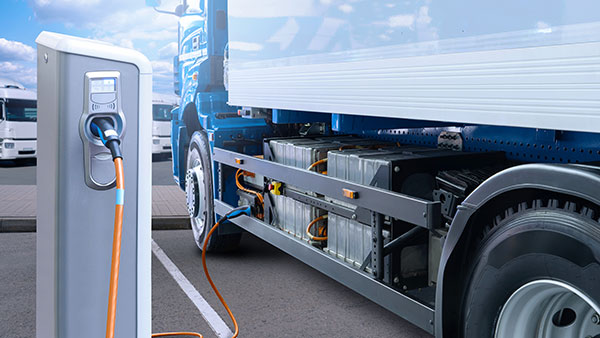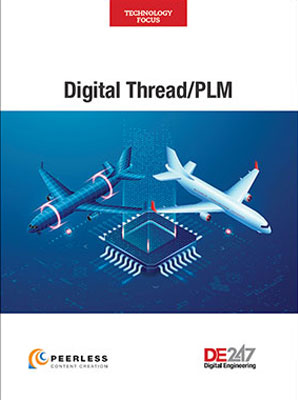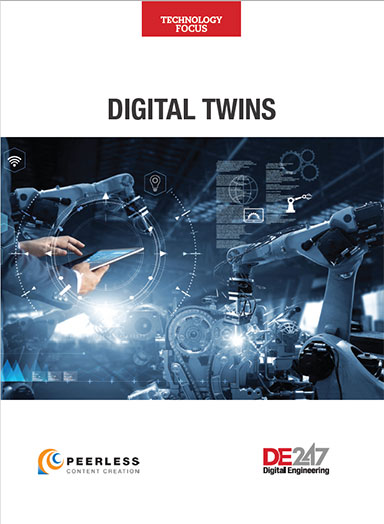Industry Outlook 2023: Supply chain, sustainability, and workforce present challenges and opportunities
The adoption of a digitalization strategy provides a natural foundation on which companies can embrace some of the most exciting technologies available.

Figure 1: Efforts towards reducing emissions, limiting resource usage, and increasing energy efficiency will continue to be a key focus for companies in 2023. These efforts will need to take a holistic approach to improving the sustainability of the entire company. Image courtesy of Siemens Digital Industries Software.
Latest News
December 8, 2022
By Dale Tutt
Three major trends severely challenged industries in 2022: supply chain disruption, sustainability and workforce turnover. These will undoubtedly persist into 2023, even as new, unexpected challenges will likely emerge. All these known and future challenges offer an opportunity for innovation and transformation, to companies who take advantage of the advancements in digital technologies. The adoption of a digitalization strategy provides a natural foundation on which companies can embrace some of the most exciting technologies available: additive manufacturing, artificial intelligence and machine learning (AI/ML), cloud and service-based software, industrial metaverse, IT/OT fusion, model-based systems engineering (MBSE) and the digital thread underlying each of these advanced technologies.
Additive Manufacturing
Additive manufacturing is an important tool at the disposal of organizations around the world pursuing sustainability solutions. From a sustainability perspective, additive manufacturing can help companies reduce waste materials that traditional manufacturing processes create. Casting and machining are both common processes that produce waste as a matter of course. Switching to additive processes can greatly reduce the material cost of parts that were previously cast or machined by eliminating the need for molds and the waste material produced in the subtractive machining process. Additive is also exciting because of the relative lack of design constraints it imposes compared to other manufacturing processes. As a result, designers can create components that are more efficient in several ways, including material usage, thermal performance, and strength-to-weight ratio, helping companies to produce products while using less energy and fewer resources.
AI/ML
Companies are already seeing benefits from AI/ML, but the integration of AI/ML into supply chain digital twin models will further enhance the value they can provide. When applied to supply chain management, AI/ML can help quickly sort and organize the massive amounts of data that a modern global supply chain will produce, making it easier to focus on the most important trends and patterns within the gathered data, and the more an AI/ML system is used, the better it will get at recognizing patterns and even predicting future supply issues before they occur.

Sustainability programs can also benefit greatly from the power of AI and ML. For example, an AI/ML engine can help automate the aggregation of all the information a company needs to build collective intelligence mentioned above without over-taxing employees with tedious information retrieval. This collective intelligence will then help a company make objective assessments about their sustainability performance and create solutions to address areas where they may be falling short.
AI/ML can also play a part in addressing workforce challenges. Today, engineering software incorporates AI to learn command patterns of the user. As the AI system learns, it is then able to suggest next commands based on steps the user has taken and actions they will likely wish to use next. Some companies have leveraged this technology to capture the patterns of their current employees to help train new hires. This strategy can help new employees learn and contribute at a much faster rate.
Cloud and Software as a Service
As the flexibility to work from anywhere becomes increasingly important, the seamless experience and interoperability of service-based software delivery will be a boon to companies as they attract new talent, upskill existing employees, and seek to improve their productivity overall. SaaS deployment methods ensure that the software employees use every day remains up-to-date and interoperable with the tools being used by customers, suppliers, and partners. This will make it much easier for employees to do their jobs and support greater productivity across the company.
Industrial Metaverse
With advances in extended reality (XR), which includes augmented, virtual and mixed reality. The foundation is being set for companies to embrace the industrial metaverse. The industrial metaverse is a global collaborative world where virtual and physical merge to provide an immersive experience. It is an interface for interactions between the physical and digital worlds by combining physics-based simulation and the digital twin with the photo realistic 3D visualizations of gaming. It leverages a number of existing technologies in addition to XR, including AI/ML, blockchain, cloud/edge computing and 5G/6G technology.
One of the key deficiencies of today’s most common solutions for supply chain management is an inability to provide context or situational awareness to business leaders at the level of an entire supply chain. The industrial metaverse can be used to create intuitive visualizations that are easier to digest than numbers in a chart or points on a table. For business leaders, this can contribute to a higher level of situational awareness on a global scale.

In addition to providing new insights into the supply chain, the industrial metaverse can also aid in workforce development by enabling an immersive training environment for new and existing employees. As the industrial metaverse develops, it will change the way companies work by creating a virtual space to work on real-world projects that are more collaborative, interactive, and immersive.
IT/OT Fusion
The convergence of IT and OT will enable greater productivity. It combines operation technology with the organization’s information technology to provide greater flexibility and visibility into operations, empowering manufacturers to make more informed decisions through real-time process monitoring of the shop floor. Managers can easily assess the business impact of manufacturing activity. IT/OT Fusion also supports and encourages collaboration across planning and scheduling as well as factory performance, leading to superior efficiency. Additionally, artificial intelligence and machine learning can be applied to these large data sets, uncovering non-conformance and non-regular data to quickly make decisions based on that information and further improve manufacturing.
MBSE
As companies embrace a digitalization strategy, MBSE is mission critical. It begins with a clear understanding and definition of the problem or scope that the product is being asked to address. While the initial focus is on ensuring product requirements can be represented against a set of functional capabilities and behavioral use cases, MBSE plays a key role in the development and maturation of product requirements, functional modeling, and the optimized product architecture that occurs during concept engineering. It works with other activities such as multi-disciplinary optimization, conceptual manufacturing and product support, mission modeling, and verification planning. As companies work to scale toward an ‘as defined’ Digital Twin, MBSE can serve as a connecting thread from initial concepts and requirements through to their fulfillment in the product design and production.
Digitalization Transforms Challenges Into Competitive Advantage
Through digitalization and the application of these advanced technologies companies can transform the challenges of 2023 into opportunities. Companies who embrace advanced digital technologies will be able to foster collaboration, gather and leverage data, and explore innovative solutions while saving time and money. With the benefits facilitated by these powerful tools, companies in all industries will be ready to seize the opportunities of tomorrow.
Dale Tutt is vice president of Industry Strategy, Siemens Digital Industries Software.
Subscribe to our FREE magazine, FREE email newsletters or both!
Latest News






